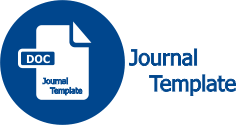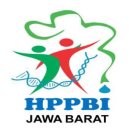Student STEM Literacy Ability Profile on Environmental Change Issues
DOI:
https://doi.org/10.25134/quagga.v16i2.344Keywords:
STEM Literacy, Environmental Change, High School Student, DescriptiveAbstract
In addressing environmental issues, it is important to measure STEM literacy achievement to increase students' environmental awareness and equip them with the necessary skills to contribute to finding solutions. This research aims to determine the profile of students' STEM literacy achievement in Bandung regarding environmental change issues. The research method used is descriptive with a qualitative approach. The research subjects comprised 193 tenth-grade students selected from SMA Negeri 1 Bandung, SMA Negeri 4 Bandung, and SMA Negeri 9 Bandung for the 2023/2024 academic year, chosen through simple random sampling. The research instrument consisted of 40 multiple-choice questions on environmental change issues, covering seven STEM literacy indicators: explaining phenomena scientifically, evaluating and designing scientific investigations, interpreting data and evidence scientifically, understanding technological principles, developing solutions to achieve goals, formulating situations mathematically, and using concepts, facts, procedures, or reasoning. Data analysis was conducted by calculating the average score of students' STEM literacy achievement per indicator as a percentage. The research results indicate that the percentage of students' STEM literacy achievement is 70%, categorized as moderate. The percentages per STEM literacy indicator are as follows: explaining phenomena scientifically at 71%, evaluating and designing scientific investigations at 61%, interpreting data and evidence scientifically at 73%, understanding technological principles at 76%, developing solutions to achieve goals at 74%, formulating situations mathematically at 61%, and using concepts, facts, procedures, or reasoning at 61%.
References
Arora, N. K., Fatima, T., Mishra, I., Verma, M., Mishra, J., & Mishra, V. (2018). Environmental sustainability: Challenges and viable solutions. Environmental Sustainability, 1(4), 309–340. https://doi.org/10.1007/s42398-018-00038-w
Banila, L., Lestari, H., & Siskandar, R. (2021). Penerapan blended learning dengan pendekatan STEM untuk meningkatkan kemampuan literasi sains siswa pada pembelajaran biologi di masa pandemi covid-19. Journal of Biology Learning, 3(1), 25. https://doi.org/10.32585/jbl.v3i1.1348
Bob, U., & Bronkhorst, S. (2011). Environmental conflicts: Key issues and management implications. African Journal on Conflict Resolution, 10(2). https://doi.org/10.4314/ajcr.v10i2.63307
Chairulli, M., & Rahmi, Y. L. (2022). Capaian Literasi STEM Peserta Didik dalam Pembelajaran Biologi Kelas XI di SMA. Journal for Lesson and Learning Studies, 5(1), 143–148. https://doi.org/10.23887/jlls.v5i1.47005
Dewi, C. A., Erna, M., Martini, M., Haris, I., & Kundera, I. N. (2021). The Effect of Contextual Collaborative Learning Based Ethnoscience to Increase Student s Scientific Literacy Ability. Turkish Journal of Science Education, 3. https://doi.org/10.36681/tused.2021.88
Dianjaya, A. R., & Epira, P. (2020). Indonesia Green Economy Implementation Readiness of Greenhouse Gas Emissions Reduction. Journal of Contemporary Governance and Public Policy, 1(1), 27–40. https://doi.org/10.46507/jcgpp.v1i1.5
Frankel, J. R., Wallen, N. E., & Hyun, H. H. (2012). How to Desigen and Evaluate Reserch in Education. McGraw-Hill. https://eric.ed.gov/?id=ED323168
Kelp, N. C., McCartney, M., Sarvary, M. A., Shaffer, J. F., & Wolyniak, M. J. (2023). Developing Science Literacy in Students and Society: Theory, Research, and Practice. Journal of Microbiology & Biology Education, 24(2), e00058-23. https://doi.org/10.1128/jmbe.00058-23
López Chao, A., Casares Gallego, A., Lopez-Chao, V., & Alvarellos, A. (2020). Indicators Framework for Sustainable Urban Design. Atmosphere, 11(11), 1143. https://doi.org/10.3390/atmos11111143
Miranti, H., Abdurrahman, & Hasnunidah, N. (2020). Perspective of students’ science communication in science learning: Opportunity in developing makerspace STEM learning approach. Journal of Physics: Conference Series, 1572(1), 012049. https://doi.org/10.1088/1742-6596/1572/1/012049
Nasution, R. (2016). Analisis Literasi Lingkungan Siswa SMA Kelas X di Samboja dalam Pembelajaran Biologi. Prosiding Seminar Nasional XIII Pendidikan BIologi FKIP UNS, 352–358.
Ningrum, M. A., & Rahmi, Y. L. (2021). Analisis Kebutuhan Penilaian Capaian Literasi STEM Peserta Didik dalam Pembelajaran Biologi. JURNAL EKSAKTA PENDIDIKAN (JEP), 5(2), 156–163. https://doi.org/10.24036/jep/vol5-iss2/592
Nurbayani, D., Hindriana, A. F., & Sulistyono, S. (2023). Pembelajaran Berbasis Proyek Terintegrasi STEM (PjBL-STEM) Meningkatkan Keterampilan Rekayasa dan Sikap Kewirausahaan. Quagga: Jurnal Pendidikan dan Biologi, 15(1), 54–64. https://doi.org/10.25134/quagga.v15i1.6469
Rukoyah, S. O. (2020). Pembelajaran Berbasis STEM untuk Membangun Keterampilan Rekayasa dan Kemampuan Engineering Productivity Siswa. Universitas Pendidikan Indonesia.
Sari, N. A., Mulyani, S., Hastuti, B., & Indriyanti, N. Y. (2021). Analysis of High School Students’ STEM Literacy and Problem-Solving Skills in Chemistry. Journal of Physics: Conference Series, 1842(1), 012064. https://doi.org/10.1088/1742-6596/1842/1/012064
Simbolon, H., Simbolon, M. R., & Harahap, F. (2019). An Analysis of Students’ Scientific Literacy Skills in State Senior High Schools throughout Central Tapanuli District. Proceedings of the 4th Annual International Seminar on Transformative Education and Educational Leadership (AISTEEL 2019). Proceedings of the 4th Annual International Seminar on Transformative Education and Educational Leadership (AISTEEL 2019), Medan City, Indonesia. https://doi.org/10.2991/aisteel-19.2019.22
Stains, M., Harshman, J., Barker, M. K., Chasteen, S. V., Cole, R., DeChenne-Peters, S. E., Eagan, M. K., Esson, J. M., Knight, J. K., Laski, F. A., Levis-Fitzgerald, M., Lee, C. J., Lo, S. M., McDonnell, L. M., McKay, T. A., Michelotti, N., Musgrove, A., Palmer, M. S., Plank, K. M., … Young, A. M. (2018). Anatomy of STEM teaching in North American universities. Science, 359(6383), 1468–1470. https://doi.org/10.1126/science.aap8892
Sukardi. (2008). Metodologi Penelitian Pendidikan, Kompetensi dan Praktiknya. PT Bumi Aksara.
Sukarno. (2013). The Profile of Science Process Skill (SPS) Student at Secondary High School (Case Study in Jambi). 1(1).
Tang, K., & Williams, P. J. (2019). STEM literacy or literacies? Examining the empirical basis of these constructs. Review of Education, 7(3), 675–697. https://doi.org/10.1002/rev3.3162
Thibaut, L., Knipprath, H., Dehaene, W., & Depaepe, F. (2018). The influence of teachers’ attitudes and school context on instructional practices in integrated STEM education. Teaching and Teacher Education, 71, 190–205. https://doi.org/10.1016/j.tate.2017.12.014
Utami, K., Surtikanti, H. K., & Rochintaniawati, D. (2023). The profile of students’ problem-solving skills toward environmental pollution topic. Assimilation: Indonesian Journal of Biology Education, 6(1), 9–16. https://doi.org/10.17509/aijbe.v6i1.52813
Wahyuni, I. (2019). The Critical Education View of the Modern Community against the Environment. Proceedings of the 6th International Conference on Community Development (ICCD 2019). Proceedings of the 6th International Conference on Community Development (ICCD 2019), Bandar Seri Begawan, Indonesia. https://doi.org/10.2991/iccd-19.2019.66
Widya, Rifandi, R., & Laila Rahmi, Y. (2019). STEM education to fulfil the 21 st century demand: A literature review. Journal of Physics: Conference Series, 1317(1), 012208. https://doi.org/10.1088/1742-6596/1317/1/012208
Downloads
Published
How to Cite
Issue
Section
License
Copyright (c) 2024 Quagga: Jurnal Pendidikan dan Biologi

This work is licensed under a Creative Commons Attribution-ShareAlike 4.0 International License.

















